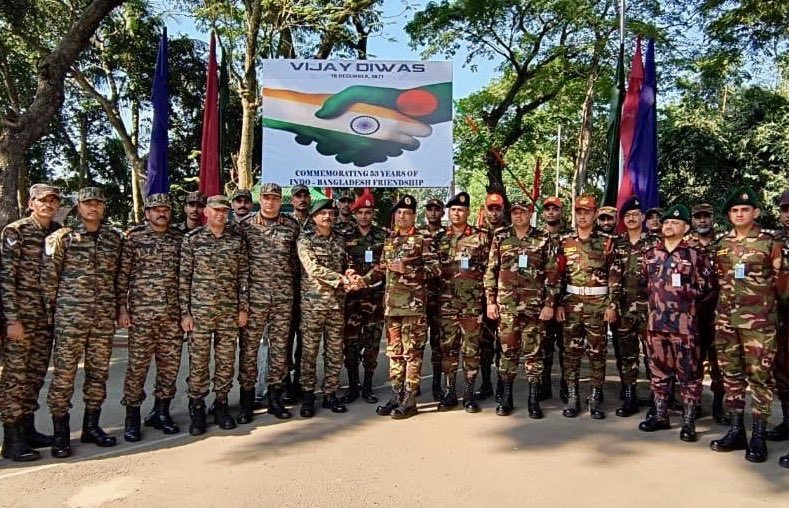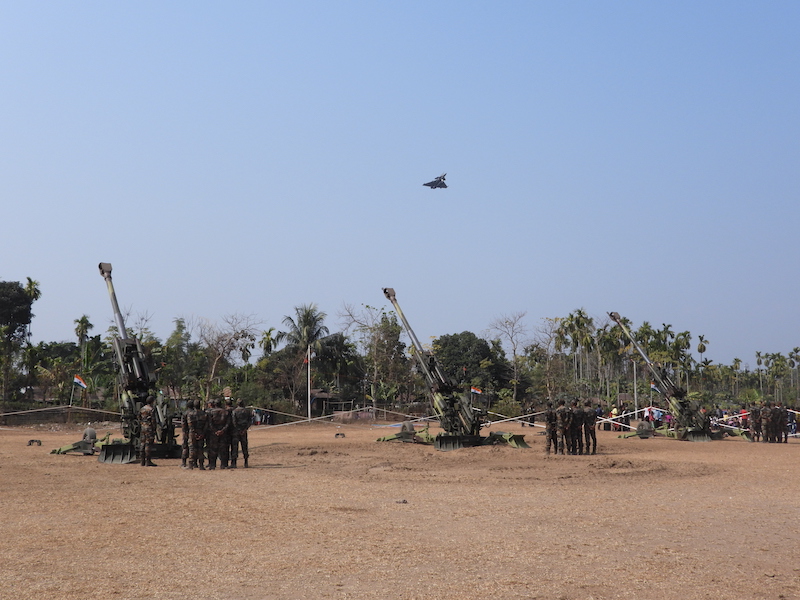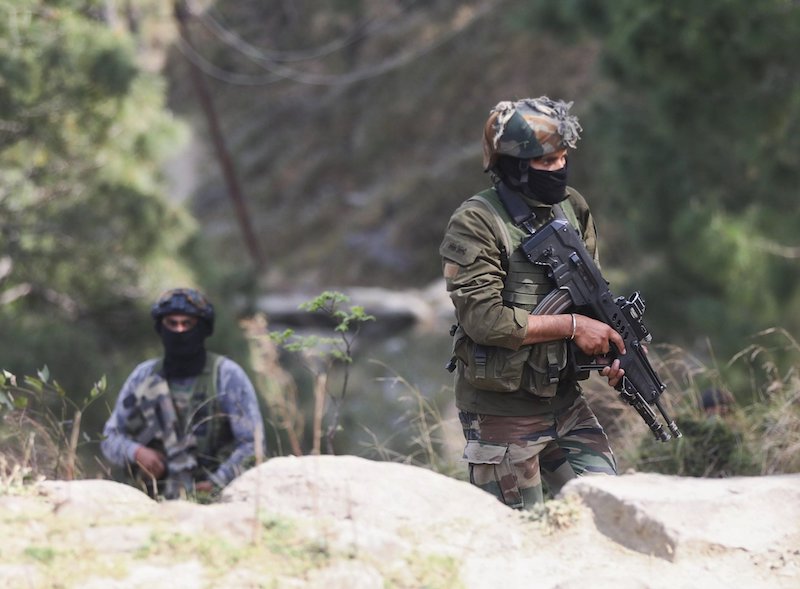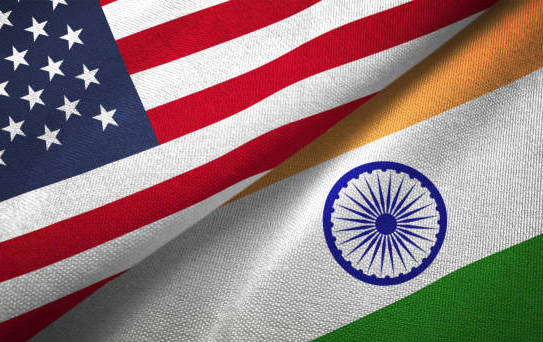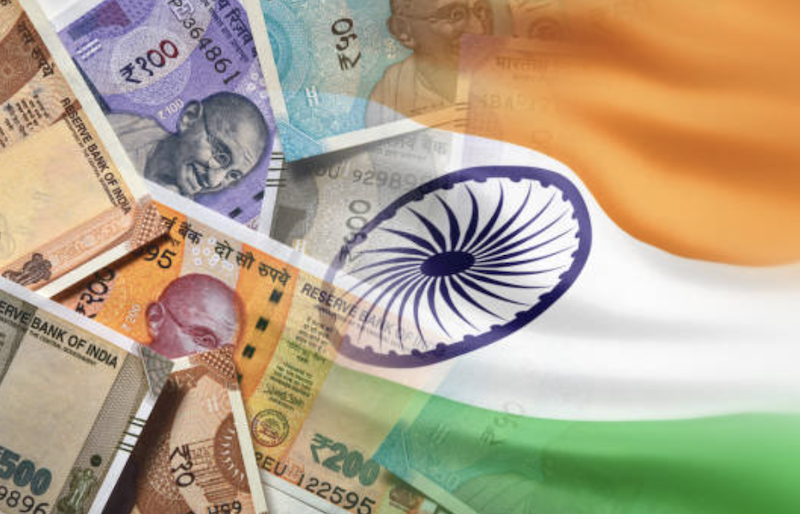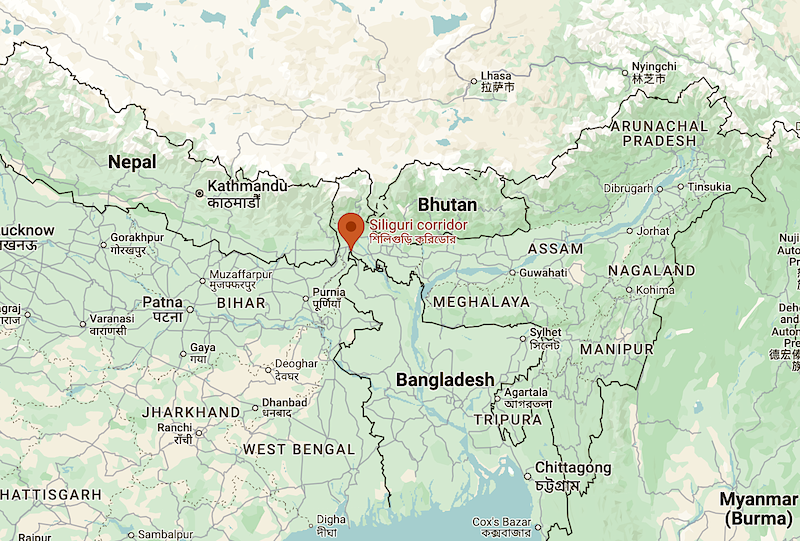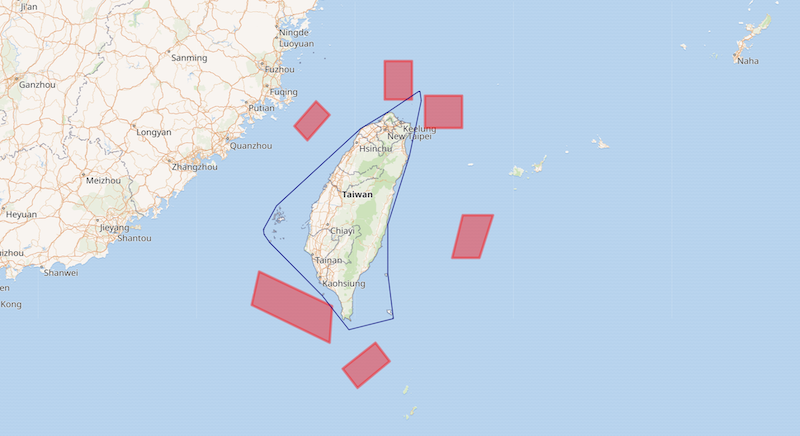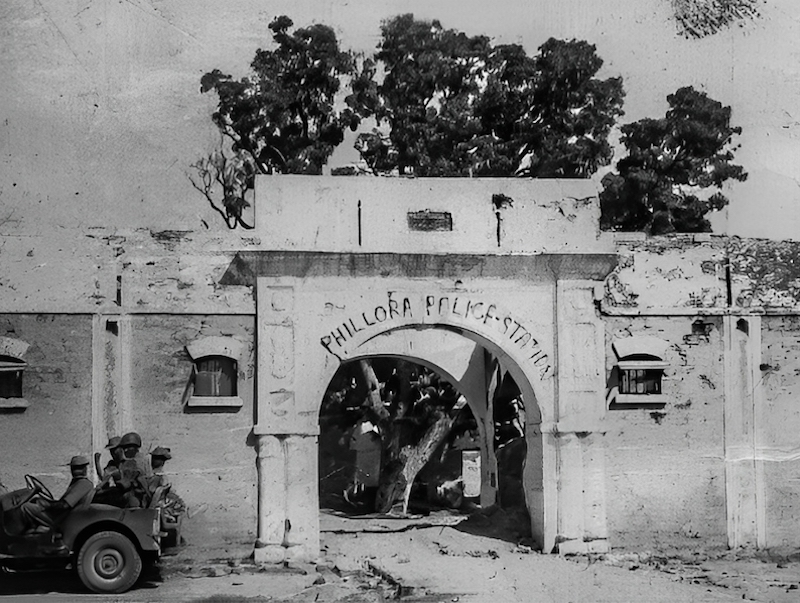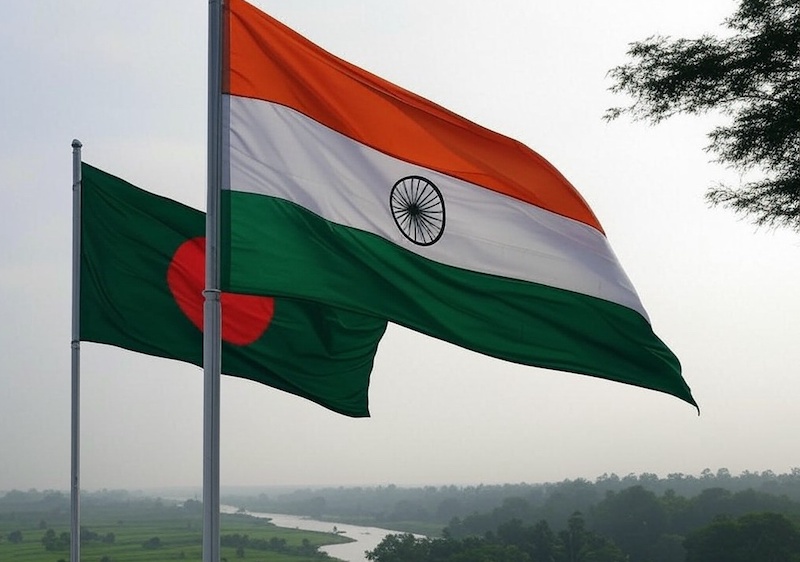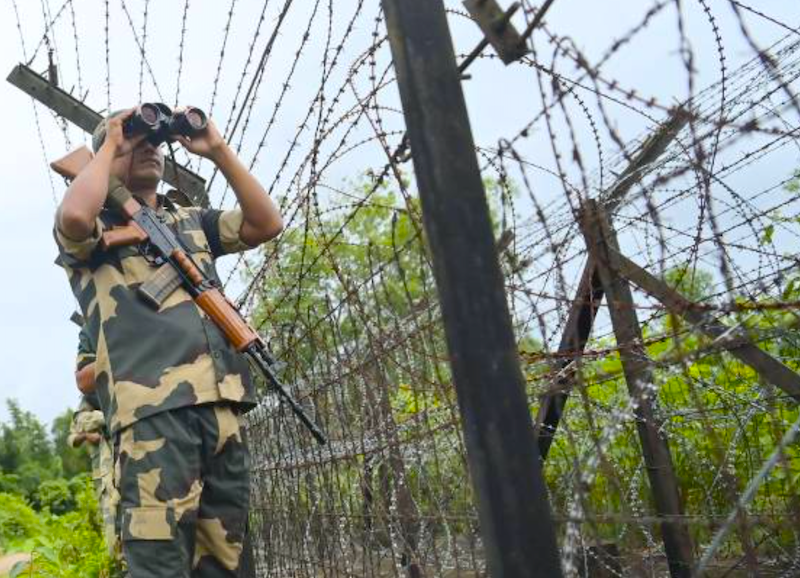 A BSF soldier keeps watch across a fenced section of the India-Bangladesh border.
A BSF soldier keeps watch across a fenced section of the India-Bangladesh border.
Border management in India encompasses both border-guarding forces and border populations, including border areas and local administration. It ensures the security of the nation’s borders against hostile elements while facilitating legitimate trade and commerce. This comprehensive approach includes border-security architecture and infrastructure along international boundaries, comprising border fencing, roads, floodlights, surveillance grids, human resources, and security infrastructure depth for closed borders. For open borders, security measures are concentrated at the international boundary with appropriate depth.
The border population and areas extending up to 50 kilometres from the international boundary in Punjab, Rajasthan, Gujarat, West Bengal and Assam – and the entirety of Meghalaya, Tripura, Mizoram, Manipur, Nagaland and Arunachal Pradesh – form an integral part of this security framework. This jurisdictional extension primarily addresses internal security concerns emanating from the borders.
Read also: Bangladesh’s shifting posture has strategic implications for regional stability
Effective border management, therefore, requires strengthening security through a three-pronged approach: border security, defence infrastructure and border area development.
Border security and defence infrastructure encompass multiple facets covering peacetime border guarding and wartime preparedness. This includes maintaining the international boundary (IB) demarcated by border pillars and ensuring the softness of adjacent spaces through regular ploughing to track violations. The framework involves clearing wild vegetation and seasonal nullahs (drains/rivulets) for unobstructed surveillance through technical equipment and human observation. Critical components include border fencing, roads, floodlight systems with underground and overground cables, hand-held thermal imagers (HHTIs), border outposts and control rooms for analysing technical surveillance feeds.
Read also: Think professionally, beyond political gains, for peace in Manipur
The framework extends to integrated check posts (ICPs) facilitating cross-border movement of passengers and goods. Initiatives, like the Border Area Development Programme (BADP) and the Vibrant Village Programme, implemented from 2022-23 to 2025-26, represent initial steps towards comprehensive border area development. However, more substantial initiatives are essential for strengthening border security infrastructure.
According to recent data, the Union home ministry has received enhanced funding for border fortification. The allocation for border management in the 2025-2026 budget stands at ₹5,597 crore, marking a 49 per cent increase from the previous year’s ₹3,756 crore. However, considering India’s vast borders – 15,106.7 kilometres of land borders with seven countries and 7,516.6 kilometres of coastal borders – this allocation may prove insufficient.
Read also: India’s law enforcement must not hide behind shield of police reforms
India faces significant challenges along its borders with China, Pakistan, and Bangladesh, characterized by perpetual hostility. While India actively pursues disengagement with China, the line of actual control (LAC) remains unstable. Pakistan continues its aggressive stance, attempting to push personnel, arms and drugs through various routes into Jammu & Kashmir and Punjab, while using Gujarat’s coastal areas to destabilize these regions through narcoterrorism. Bangladesh’s internal instability has rendered the entire northeastern border hypersensitive, with recurring fencing disputes.
The current budget allocation amounts to approximately ₹35-36 lakh per kilometre for land borders and reduces to about ₹25 lakh when including coastal border infrastructure development – figures that appear wholly inadequate. The border-guarding central armed police forces (CAPFs) have received marginal increases:
* Border Security Force: ₹28,231.27 crore (1.19% increase)
* Indo-Tibetan Border Police: ₹10,370 crore (4.9% increase)
* Sashastra Seema Bal: ₹10,237.28 crore (3.94% increase)
* Assam Rifles: ₹8,274.29 crore (5.06% increase)
Read also: India must consolidate its western front to tame Pakistan
The total allocation of ₹57,112.84 crore for border-guarding forces represents a mere 2.20 per cent increase, which may not even offset inflation.
Border security remains incomplete without comprehensive development of border areas. The recent cut of ₹75,133 crore in rural development to meet fiscal deficit targets could severely impact border regions, potentially compromising security. A separate border-area development fund, distinct from the existing Border Area Development Programme, could address these concerns more effectively.
Read also: Robust HUMINT network is the key to defeat militancy in Jammu & Kashmir
The government must recognize that border security is synonymous with national security. Effective border management requires substantial investment in both infrastructure and human resources, along with the development of border communities. Given the challenging regional geopolitics and hostile security environment along national frontiers, the government should reconsider its budget allocations for both border-guarding forces and rural development in border areas for 2025-26.
Disclaimer: The views expressed in the article are the author’s own and don’t necessarily reflect the views of India Sentinels.
Follow us on social media for quick updates, new photos, videos, and more.
X: https://x.com/indiasentinels
Facebook: https://facebook.com/indiasentinels
Instagram: https://instagram.com/indiasentinels
YouTube: https://youtube.com/indiasentinels
© India Sentinels 2024-25

